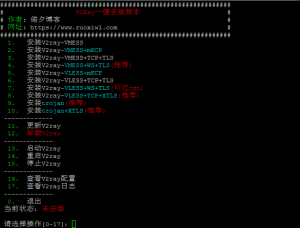
作为一名中文编辑,我将为大家详细分析国外文化英语以及国外主机代购服务。国外文化英语是指以英语为主要交流语言的国家所拥有的独特文化特点。这些国家包括英国、美国、澳大利亚、加拿大等。国外主机代购服务是指通过代购服务购买国外主机,以满足个人或企业的网络需求。
国外文化英语
国外文化英语的特点之一是多元化。英语是世界上被使用最广泛的语言之一,因此在英语国家,人们来自不同国家和地区,拥有各种不同的文化背景和习俗。这使得英语国家成为了一个充满多样性和包容性的社会。在国外学习英语不仅仅是学习语言,更是了解和接触不同文化的机会。
国外文化英语的另一个特点是艺术和文学的丰富性。英语国家拥有众多著名的文学作品和艺术家。从莎士比亚的戏剧到经典小说,如《魔戒》和《哈利·波特》,英语文化以其丰富的创造力和深刻的思想触动了世界各地的读者。在国外学习英语,我们能够更深入地了解和欣赏这些经典作品,拓宽我们的文化视野。
国外文化英语也包含着饮食、音乐、电影等方面的特色。例如,英国的下午茶文化、美国的汉堡文化、澳大利亚的野生动物文化等都是国外文化英语的重要组成部分。通过学习英语,我们可以更好地了解这些国家的特色美食、流行音乐和电影文化,丰富我们的生活体验。
国外主机代购服务
国外主机代购服务是指通过代购服务购买国外主机来满足个人或企业的网络需求。国外主机是指托管在国外的服务器,具有更稳定的网络连接、更强大的资源和更高的安全性。许多人和企业选择使用国外主机来搭建网站、应用程序和数据库,以实现更高的运行效率和更好的用户体验。
国外主机代购服务通过代购渠道为用户提供了方便快捷的购买途径。代购服务商常常与国外主机提供商建立合作关系,可以帮助用户选择适合的主机,并进行代购和配置。这样,用户就能够充分利用代购服务商的专业知识和经验,轻松地购买到合适的国外主机。
国外主机代购服务的优势在于功能和性能的提升。国外主机拥有更高的带宽和更先进的硬件设备,可以提供更快的网站加载速度和更好的用户体验。国外主机通常配备了强大的安全措施,可以有效保护个人和企业的网站免受黑客攻击和数据泄露的威胁。
国外主机代购服务也存在一些挑战和考虑因素。用户需要对不同的主机服务商进行详尽的比较和评估,以选择最适合自己需求的服务商。由于国外主机需要支付外币,可能存在汇率风险和额外的费用,用户需要在购买前做好充分的预算和计划。
国外文化英语和国外主机代购服务都是在全球化背景下越来越重要的领域。通过学习国外文化英语,我们可以了解和欣赏不同文化的魅力;而通过使用国外主机代购服务,我们可以提高网络性能和安全性,满足个人和企业的需求。这些领域的发展为我们提供了更广阔的选择和机遇,也需要我们不断学习和适应。
以我是一个导游向美国人介绍中国文化,写英语作文
以我是一个导游向美国人介绍中国文化,写英语作文:
Ladies and gentlemen:
Ladies and gentlemen, welcome to Heyuan. Now let me introduce our city-Heyuan. Heyuan is a city with a long history.
It is located in the northeast of Guangdong, 198 kilometers away from Guangzhou. It has a population of 3.24 million.
There are many places of interest in Heyuan, such as Sujiawei Wanlu Lake. Wanlv Lake is a beautiful place.
The water is clean and free from pollution. There are all kinds of fish in it. You can row, fish and have a picnic there.
This is really a good place for a holiday. Besides, you can visit Heyuan Museum. You can see a lot of dinosaur egg there.
I hope you have a good time in Heyuan. I really appreciate it.
译文:
各位嘉宾:欢迎来到河源,现在让我向大家介绍我们的城市——河源。河源是一座历史悠久的城市。它位于广东东北部,距广州198公里。它有324万人口。
河源有很多名胜古迹,如苏家围万陆湖等。万绿湖是一个美丽的地方。水是干净的,没有污染。里面有各种各样的鱼。你可以在那里划船、钓鱼和野餐。这真是一个度假的好地方。此外,你可以去参观河源博物馆。在那里你可以看到很多恐龙蛋化石。我希望你们在河源玩得愉快。非常感谢。
国外vps的简单介绍
今天小编辑给各位分享国外vps的知识,其中也会对分析解答,如果能解决你想了解的问题,关注本站哦。虚拟主机,国外虚拟主机租用怎么选择一、明确客户群体,选择相应的数据中心确定好您的客户群体,那么就选择就近的机房主机,毕竟距离的远近是与网站的访问速度是有关系的。就拿我国周边网站访问速度一般来说是:香港台湾日本韩国新加坡马来西亚,不过这不是绝对的,距离有远近,VPS主机速度有不同。除去我国周边的国家,速度还不错的,首选的就是美国VPS了。所以说,数据中心是我们选择国外VPS一个非常重要的选择点,因为这直接决定了你VPS主机的速度、性能、价格。如果您是做外贸的,主要用户群体是欧洲用户,那么您就应该选择欧洲VPS;如果您的用户是美洲地区用户,那么您就应该选择美国VPS;那要是您的用户群里是东南亚地区用户,那选择亚洲VPS更为合适。二、选择具备IDC资质的服务商通常我们在搜索引擎中搜索国外VPS时,都是可以看到很多供应商的,我们在选择的时候也可以查到这些企业是否具备资质以及网友的评价如何。一家IDC服务商的资质售后口碑都是可以为大家的选购提供一定参考信息的,小编建议大家一定要选择正规口碑好的服务商,这样在售后服务方面也会减少很大的压力。三、查看产品的性价比一般选用国外VPS,相信大多用户都是为了节省开支,可以看好配置后,在同配置的产品中去进行对比挑选,货比三家,选择性价比较高的产品。值得注意的是,选择国外VPS时尽量选择Linux系统,因为Linux系统主机性能更好,而资源消耗又少,价格相比Windows还便宜。四、支付方式在支付方式的选择上,也需要注意,因为国外VPS一般都支持PayPal和信用卡付款,普遍上都不支持支付宝,所以在选择前需要确认您能够成功完成支付的VPS主机系列,像老牌主机商Gcorelabs支持支付宝付款,对国内用户很是友好。Gcorelabs提供云服务器、网站加速CDN、流媒体平台、DDos防护和DNS托管等多种IDC综合业务。Gcorelabs目前在全球拥有140多个CDNPoP和25个机房,遍布全球五大洲,包括香港、日本、韩国、新加坡、美国、南美、欧洲、俄罗斯、和意大利等。Gcorelabs在2017年收购了SkyparkCDN并提供全球CDN服务,成为世界上最快的DNS托管服务之一。如何选择国外vps服务器?选择合适VPS主机应该考虑的一些关键因素:一、可靠性:就像所有的服务器,VPS也可以有停机时间。应该寻找一个通过最小的停机时间提供最大的可靠性的VPS。一个方法是检查在线评论,另一个是通过注册一个虚拟网站来测试VPS。这是“测试”VPS托管服务的很好方式,并确定它是否适合“真实网站”。二、硬件质量:VPS基本上是在一个非常强大的计算机上工作。VPS提供商的硬件质量越好,性能就越强。应该确保VPS主机商在最新的技术上投资,如高度稳定的硬盘驱动器,可以“采取大量的内容和数据的负载,和优秀的处理器的速度和可靠性。询问他们使用的是哪一种,以及他们多久升级一次硬件以了解更多。三、客户服务:选择VPS主机商时这几乎就像“生命线”。当事情出错时,需要保证会被照顾,并可立即寻求帮助。检查VPS托管提供商是否有全天候在线聊天支持,或呼叫中心,可以在需要帮助的情况下调用。这就像有机会获得一个全天候的医生,以防生病,这是绝对必须的!四、管理与非管理VPS主机:这是另一个重要的考虑因素,因为它决定了VPS供应商的服务范围。在非托管主机下,VPS主机商只负责确保VPS工作和连接到网络,而在托管主机下,VPS主机商需要照顾更多的东西,如服务器的安全性,可靠性等。因此,如果有任何问题出现,托管服务下主机商将修复他们,而非托管服务则不会。这非常方便!五、Linux/Windows:如果网站建立在windows技术堆栈上,比如ASP.Net,需要选择WindowsVPS主机,如果网站建立在Linux技术上,需要使用LinuxVPS主机。这是关于网站构建技术与VPS的兼容性,一定要与主机商联系来咨询兼容性。推荐相关内容不同操作系统的虚拟主机有什么区别?可以国外的vps详情如下:1.亚洲地区:亚洲地区除了国内的香港vps外,还有国外的韩国vps、日本vps是亚洲地区在国内使用率比较高的两个国外vps,它不仅距离国内近、且速度仅次于香港vps,而且性价比更高,还有东南亚地区的新加坡vps、越南vps、…2.美洲地区:美洲地区的服务器当然要算美国vps最为知名,且在国内也有很高的使用率,不仅资源成本低、防御能力强,而且性价比更高,也很适合作为企业在全球范围业务的互联网基础。3.非洲地区:在国内使用非洲地区的服务器比较少,非洲服务器比较知名的有南非vps和尼日利亚vps等,非洲vps在国内的使用率很低,因为国内用户对于国外vps有很多选择。4.欧洲地区:欧洲地区的服务器要属德国vps、俄罗斯vps比较知名,当然也有其他的vps,国内用户一般只有外贸企业或跨境电商用的比较多,使用率
关于英语文化的英文介绍
An American friend has invited you to visit his family. You’ve never been to an American’s home before, and you’re not sure what to do. Should you take a gift? How should you dress? What time should you arrive? What should you do when you get there? Glad you asked. When you’re the guest, you should just make yourself at home. That’s what hospitality is all about: making people feel at home when they’re notThe question of whether or not to bring a gift often makes guests squirm. Giving your host a gift is not just a social nicety in some cultures-it’s expected. But in American culture, a guest is not obligated to bring a present. Of course, some people do bring a small token of appreciation to their host. Appropriate gifts for general occasions might be flowers, candy or-if the family has small children-toys. If you choose not to bring a gift, don’t worry. No one will even notice. American hospitality begins at home-especially when it involves food. Most Americans agree that good home cooking beats restaurant food any day. When invited for a meal, you might ask, “Can I bring anything?” Unless it’s a potluck, where everyone brings a dish, the host will probably respond, “No, just yourself.” For most informal dinners, you should wear comfortable, casual clothes. Plan to arrive on time, or else call to inform your hosts of the delay. During the dinner conversation, it’s customary to compliment the hostess on the wonderful meal. Of course, the biggest compliment is to eat lots of food! When you’ve had plenty, you might offer to clear the table or wash the dishes. But since you’re the guest, your hosts may not let you. Instead, they may invite everyone to move to the living room for dessert with tea or coffee. After an hour or so of general chit-chat, it’s probably time to head for the door. You don’t want to wear out your welcome. And above all, don’t go snooping around the house. It’s more polite to wait for the host to offer you a guided tour. But except forAmericans usually like to have advance notice when people come to see them. Only very close friends drop by unannounced. This is especially true if the guests want to stay for a few days. Here’s a good rule of thumb for house guests: Short stays are best. As one 19th century French writer put it, “The first day a man is a guest, the second a burden, the third a pest.” Even relatives don’t usually stay for several weeks at a time. While you’re staying with an American family, try to keep your living area neat and tidy. Your host family will appreciate your consideration. And they may even invite you back! Most Americans consider themselves hospitable people. Folks in the southern United States, in particular, take pride in entertaining guests. In fact, “southern hospitality” has become legendary. But in all parts of America, people welcome their guests with open arms. So don’t be surprised to find the welcome mat out for you. Just don’t forget to wipe your feet.
用英语介绍澳大利亚的文化,食物,语言等等
在google上设定语言为澳洲,然后搜索 australia culture food language 很多的。例子。English is the primary language used in Australia. Yet their colourful vocabulary, accent, phonetics system and slang (‘Strine’) can take a lot of getting used to. In 1788, there were about 250 separate Aboriginal languages spoken in Australia, plus dialects. Today, only two thirds of these languages survive and only 20 of them (eight per cent of the original 250) are still strong enough to have chance of surviving well into the next century. In addition to these there are also the languages of immigrants from Europe, the Middle East and Asia.Australian Food and CultureOn the largest island and the smallest continent in the world more than 18 million people make their home among unusual flora and fauna and some of the most unique animals in the world: the kangaroo, the dingo (a howling, doglike night hunter), the koala bear, and the platypus. One of the driest and most sparsely populated continents, Australia is mostly tropical in the north (Queensland) and temperate in the south (Victoria, New South Wales). More than half of the population live in cities and these are located in the irrigated and fertile coastal regions of the east, south-east, and southwest. For the most part, the vast interior of plateaus and eroded mountains – the out-back – is all but uninhabited, with many areas remaining untouched and primitive.Who are the Australians? It is believed that Australian Aborigines were the first settlers, arriving more than 40,000 years ago from Southeast Asia and evolving their culture in comparative isolation. By the early 1600s, seafaring Europeans arrived. Because of the gradual decline in Aboriginal population due to disease, loss of land, and faltering fertility, the colonials assumed they would soon disappear. On the contrary, the descendants of the early Aborigines are very much a vital, though small, part of the present Australian population.Many of the great seafaring nations were probably aware of this great land mass in the South Seas, but it remained for Captain Arthur Philip, of the Royal British Navy, to unfurl the British flag at Sydney Cove on January 26, 1788. To this day, this is celebrated as Australia Day. By the 1800s, almost 5,000 white male prisoners and their guards formed a colony at Sydney, joining the first 700 convicts who had been unloaded from Captain Philip’s ship on that fateful day. They may have been the first “citizens” of the “land down under,” but it is estimated that more than 35,000 years ago, the ancestors of the present Melanesians and Australian Aborigines had already been living there in their own neo–Stone Age society. In the ensuing years, with allegiance to Britain, Australia’s own parliament attempted to unite the population, but it took the First World War to weld the fiercely individual and independent population into a nation.Unification finally occurred because of the strong link to Great Britain but also because the pressures of war caused shortages of essential goods. Self-sufficiency became an urgent necessity. Improvements in agriculture, mining production, and the development of new industries not only helped on the home front but set up Australia as an exporter to world markets. Iron ore, coal, and wool, as well as meats, wheat, and sugar became vital economic commodities.Since the First World War increasingly diversified ethnic immigration add vitality to Australian lifestyles and generated heated debate in the country over the future of its preponderantly Caucasian population. Pride in “Aboriginality” enhanced growth in the indigenous population, Asian-born Australians increased their presence, and refugees and displaced persons from many lands all added to the population by the late 1980s.Up to the Second World War, Australia’s population was more than 99 percent of British origin. Following the war, many of the displaced and war-weary of Europe migrated to Australia. These people included Italians, Dutch, Poles, Germans, Yugoslavians, Greeks, Ukrainians, and Latvians. These, then, are the Australians. Given this diversity, it is not surprising to find that one of the largest Australian cookbooks, Australian and New Zealand Complete Book of Cookery, should turn out to be a study of international cookery. Many writers then claimed that Australia lacked a distinctive cuisine, regional cooking styles, or even any great national dishes. Nonetheless, the combination of a wealth of seafood, good inexpensive lamb, delicious fruits, and the inspiration and ingenuity of immigrants long immersed in their own traditional cuisines, has now been recognized as a distinctive evolving Australian cuisine.In fact, a current report on Australian food customs states: “Australians have thrown off the British yoke of pub grub and have embraced the great bounty from their own seas along with home-grown fruit and vegetables and the spices of Asia.” The nostril-tweaking scents of Asian spices, the hot delight of chilies, the surprising pleasure of finger foods and dipping sauces are to be found not just in restaurants but on Australian tables everywhere. The palate-tantalizing flavors of Indonesia, Malaysia, India, and Vietnam, brought to Australia by travelers and immigrants, have found a new home and are creating a new tradition of fusion cuisine that is startlingly original, memorable and delicious.Australian wines have long been making their presence appreciated in world markets, but more recently, visitors to the land down under are bringing back delicious accounts of bush tucker. The basic wilderness foods of the Aboriginals are gaining in popularity and sophisticated preparation. These include herbs like mountain pepper, watercress oil, and wattleseed (with a “coffee-hazelnut flavor”) as well as rabbit, kangaroo, wallaby, crocodile, emu, and bunya nuts. Many fruits and vegetables unknown to most of the world await discovery. Examples of these include: greens called warrigal, lemon aspin that looks like a little pumpkin and tastes like citrus fruit, munthari berries with their apple-like taste, and tiny kakadu plums, their size belying their prodigious vitamin C content.
怎样用英语介绍法国的文化
Culture, whether in France, Europe or in general, consists of beliefs and values learned through the socialization process as well as material artifacts.[1][2] Culture guides the social interactions between members of society and influences the personal beliefs and values that shape a person’s perception of their environment: “Culture is the learned set of beliefs, values, norms and material goods shared by group members. Culture consists of everything we learn in groups during the life course-from infancy to old age.”[3]The conception of “French” culture however poses certain difficulties and presupposes a series of assumptions about what precisely the expression “French” means. Where as American culture posits the notion of the “melting-pot” and cultural diversity, the expression “French culture” tends to refer implicitly to a specific geographical entity (as, say, “metropolitan France”, generally excluding its overseas departments) or to a specific historico-sociological group defined by ethnicity, language, religion and geography. The realities of “Frenchness” however, are extremely complicated. Even before the late nineteenth century, “metropolitan France” was largely a patchwork of local customs and regional differences that the unifying aims of the Ancien Régime and the French Revolution had only begun to work against, and today’s France remains a nation of numerous indigenous and foreign languages, of multiple ethnicities and religions, and of regional diversity that includes French citizens in Corsica, Guadeloupe, Martinique and elsewhere around the globe.The creation of some sort of typical or shared French culture or “cultural identity”, despite this vast heterogeneity, is the result of powerful internal forces — such as the French educational system, mandatory military service, state linguistic and cultural policies — and by profound historic events — such as the Franco-Prussian war and the two World Wars — which have forged a sense of national identity over the last 200 years. However, despite these unifying forces, France today still remains marked by social class and by important regional differences in culture (cuisine, dialect/accent, local traditions) that many fear will be unable to withstand contemporary social forces (depopulation of the countryside, immigration, centralization, market forces and the world economy).In recent years, to fight the loss of regional diversity, many in France have promoted forms of multiculturalism and encouraged cultural enclaves (communautarisme), including reforms on the preservation of regional languages and the decentralization of certain government functions, but French multiculturalism has had a harder time of accepting, or of integrating into the collective identity, the large non-Christian and immigrant communities and groups that have come to France since the 1960s.The last fifty years has also seen French cultural identity “threatened” by global market forces and by American “cultural hegemony”. Since its dealings with the 1993 GATT free trade negotiations, France has fought for what it calls the exception culturelle, meaning the right to subsidize or treat favorably domestic cultural production and to limit or control foreign cultural products (as seen in public funding for French cinema or the lower VAT accorded to books). The notion of an explicit exception française however has angered many of France’s critics[4].The French are often perceived as taking a great pride in national identity and the positive achievements of France (the expression “chauvinism” is of French origin) and cultural issues are more integrated in the body of the politics than elsewhere (see “The Role of the State”, below). The French Revolution claimed universalism for the democratic principles of the Republic. Charles de Gaulle actively promoted a notion of French “grandeur” (“greatness”). Perceived declines in cultural status are a matter of national concern and have generated national debates, both from the left (as seen in the anti-globalism of José Bové) and from the right and far right (as in the discourses of the National Front).
新西兰景点及简单的新西兰文化用英语如何介绍?
1、皇后镇(Queenstown)
紧靠南阿尔卑斯山,曾以淘金闻名于世,是新西兰旅游的观光胜地。旅游设施完备,交通方便,是钓鱼、滑水、泛舟的好地方;有各式商店、销售地道的工艺品、首饰精品;有许多中国餐馆,深受游客的青睐。
Close to the Southern Alps, it was once famous for its gold rush and is a tourist attraction for New Zealand.
With complete tourism facilities and convenient transportation, it is a good place for fishing, water skiing and rafting. There are various shops, authentic crafts and fine jewelry.
There are many Chinese restaurants, which are very popular among tourists.
2、伊甸山(Mount Eden)
位于市中心以南约5公里处,是一死火山的火山口。山顶设有瞭望台,视野开阔,是眺望市景的好地方。此外,还可参观到12世纪时毛利人要塞的遗迹。
Mount Eden is located about 5 kilometers south of the city center, it is the crater of an extinct volcano.
There is a gazebo on the top of the mountain with a wide view and is a great place to look out over the city.
In addition, you can visit the remains of the Maori fortress in the 12th century.
3、毛利文化村
罗托鲁瓦市中心附近,有名叫奥希内穆图的毛利村,内有毛利人的会议厅,柱子上雕有记述阿拉瓦部族历史的精美图案。
There is a gazebo on the top of the mountain with a wide view and is a great place to look out over the city. In addition, you can visit the remains of the Maori fortress in the 12th century.
4、天空塔
坐落在奥克兰的市中心。高328米,是奥克兰的标准性建筑,也是南半球的最高建筑。它与其他的建筑连成一体,组成巨大的天空城(SkyCity),城中汇集了新西兰最大的赌场,十个餐厅和酒吧,4星+宾馆,剧场以及许多独一无二的旅游冒险活动。它还有巨大的地下停车场和城际Bus总站。
The Sky Tower is located in the heart of Auckland. At 328 meters high, it is the standard building in Auckland and the tallest building in the southern hemisphere.
It is integrated into other buildings to form the huge SkyCity, home to New Zealand’s largest casino, ten restaurants and bars, 4 stars + hotels, theaters and many unique tourist adventures.
It also has a huge underground car park and an intercity bus terminal.
5、海港大桥
连接奥克兰最繁忙的港口——怀提玛塔海港南北两岸,全长1020米,与停泊在奥克兰艇俱乐部的万柱桅杆,组成了一幅壮观美丽的图画。
The Harbour Bridge connects Auckland’s busiest port, the north and south banks of the Whitimata Harbour, to a total length of 1,020 meters.
It is a spectacular picture with a 10,000-column mast anchored at the Auckland Boat Club.
新西兰的“环太平洋”料理风格受到欧洲、泰国、马来西亚、印度尼西亚、玻利尼西亚、日本和越南的影响。全国各地的咖啡馆和餐厅都提供这种结合各地特色的料理。新西兰的艺术与文化得自于各个种族,产生了结合毛利人、欧洲人、亚洲人和大洋洲人的特质。
毛利人有着丰富又活泼的文化,保留了他们长久以来与精神和自然世界的连结。他们以自己特别的“米希”(mihi,问候)方式透过来传承自己的家世。
New Zealand’s “Pacific Rim” cuisine is influenced by Europe, Thailand, Malaysia, Indonesia, Polynesia, Japan and Vietnam.
This combination of local specialties is served in cafes and restaurants across the country. New Zealand’s art and culture is derived from all races and combines the qualities of Maori, European, Asian and Oceanian.
Maori have a rich and lively culture that retains their long-standing connection to the spiritual and natural world. They passed on their own family by means of their special “mihi” (greeting).
扩展资料
新西兰共14个国家公园、3个海洋公园、3项世界遗产,其中1项为双重遗产。新西兰最美丽的地方是岛屿湾,那里主要城市有:派西亚,拉塞尔和怀唐伊。拉塞尔曾经是新西兰的第一个首都,派西亚属于岛屿湾中间位置,有更多的酒店。
新西兰南北两大岛得天独厚,位于太平洋温暖的海水之中,阳光和雨量充足,南北纵横多个气候区,最北部属于亚热带气候,向南则进入副南极带,但受海洋的影响,气候仍相当暧和。
新西兰的土地肥沃富饶,草原和森林遍布全国,造就了全球首屈一指的畜牧业、奶品业和果园种植业,再加上丰富的移民及本土化,这一切都使新西兰食品不仅新鲜而丰富,调制亦别具风格和多样化。
在新西兰的每个角落,无论是森林中的露天餐馆、农庄或大城市别具风格的小餐馆,游客都可随意找到带有本地色彩或还保持着欧陆风情的食物,再不然还可尝到毛利族人的传统佳肴。每样东西都刺激人的食欲,大快朵颐一番,放怀畅饮可配搭各类食物的新西兰红、白餐酒。
参考资料来源:网络百科-新西兰











暂无评论内容